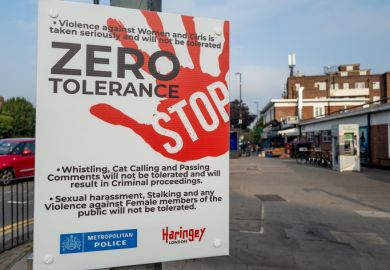Higher education participation rates have increased by a record margin in England, new figures suggest, but so did regional and gender inequalities.
Statistics from the Department for Education show 47 per cent of 15-year-olds in state schools in England in 2010-11 had entered higher education by the time they were 25.
This was up from 45.2 per cent of the previous year’s cohort and the largest increase on record. Just 38.8 per cent of the 2001-02 cohort – the first year recorded – went on to higher education.
A previous version of these statistics – which predicted future participation by age 30 using participation levels – has estimated higher education participation rates exceeding 50 per cent since 2015-16. This matched a target famously set by Tony Blair’s Labour government in 1999.
The DfE said the cohorts recorded in this new measure are on track to reach the same level by age 30.
Lee Elliot Major, professor of social mobility at the University of Exeter, warned that although rates are increasing, the core social mobility challenges remain.
“Enrolment of disadvantaged pupils still lags significantly behind, and many highly selective universities remain the preserve of students from more privileged backgrounds,” he told Times Higher Education.
And the DfE figures showed that regional inequalities between London and the rest of the nation have grown to record levels.
In the capital, 59.3 per cent of 15-year-olds had attended a higher education institution by 2020-21 – a growth of 13 percentage points in a decade.
By comparison, just 43.1 per cent of the cohort in the south-west had done the same – the lowest in England.
The fourth best-ranked of England’s nine regions a decade ago, the south-west’s participation rate has risen by just 5.3 percentage points since and has occupied last place for two consecutive years.
Professor Elliot Major said the figures were evidence of “some of the most profound social and educational divides in the country” the region faces.
“Our research found that geographical disconnection, hidden poverty, and a lack of impetus for change are harming the lives of young people in the region,” he said.
“Your chances in life should not depend on where you happen to live.”
Steve Haines, director of public affairs at youth charity Impetus, said that even with record numbers of young people entering higher education, disadvantaged students are still 40 per cent less likely to go to university than their better-off peers.
“Far from continuing to gatekeep higher education for the few, we should be throwing the doors open for all young people with the desire and ability to benefit from it,” he added.
With a participation rate of 52.1 per cent for girls and 42 per cent for boys, the DfE statistics also showed that the gender divide is worsening.
This gap is both the largest on record and represents the greatest year-on-year increase.
Register to continue
Why register?
- Registration is free and only takes a moment
- Once registered, you can read 3 articles a month
- Sign up for our newsletter
Subscribe
Or subscribe for unlimited access to:
- Unlimited access to news, views, insights & reviews
- Digital editions
- Digital access to THE’s university and college rankings analysis
Already registered or a current subscriber?








